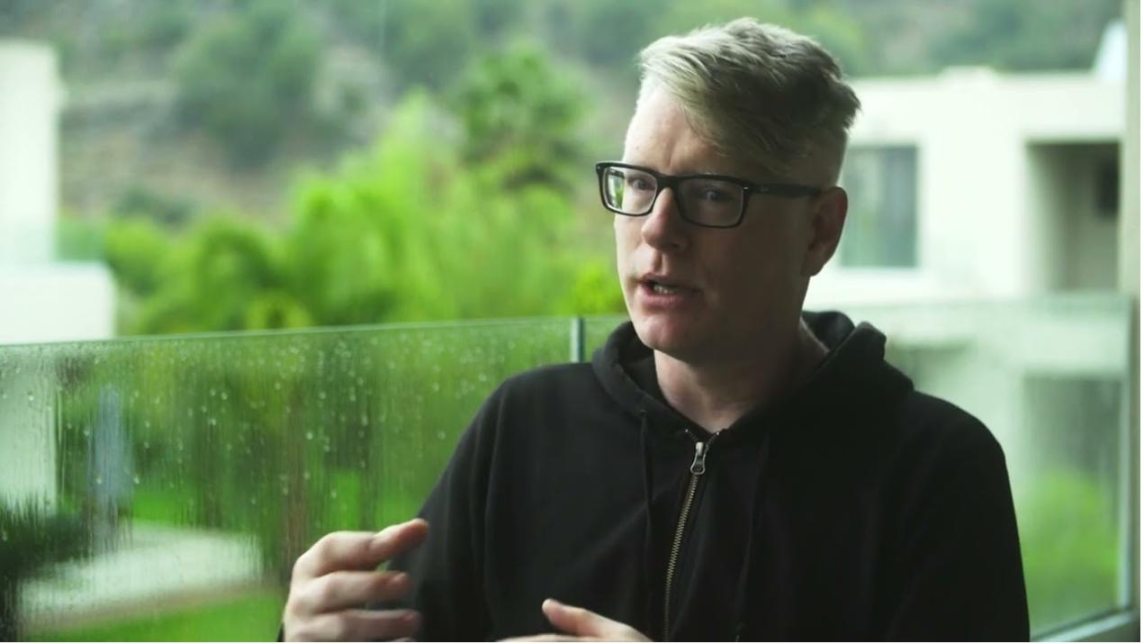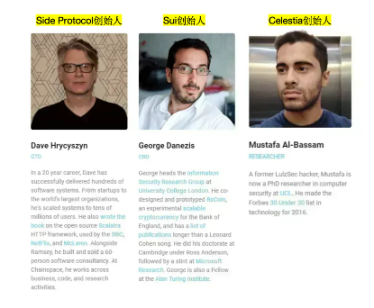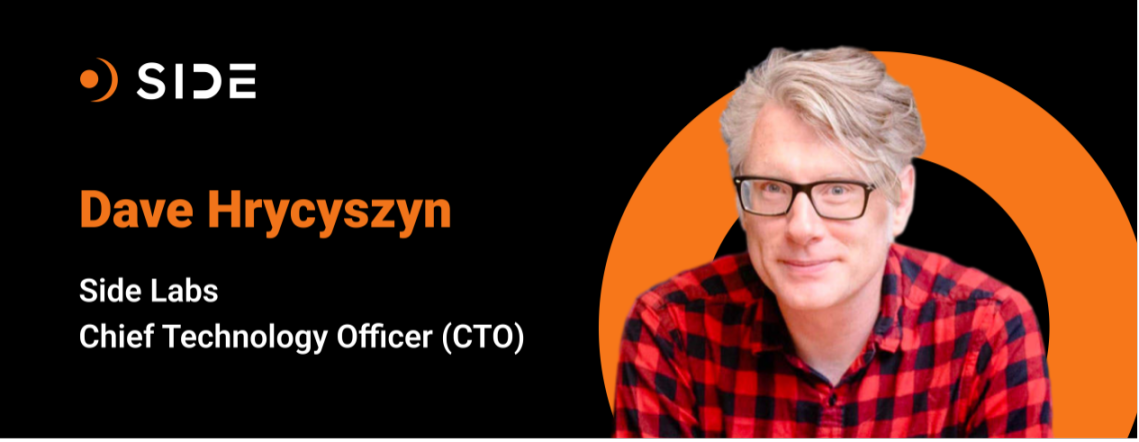Sui's co-founder George Danezis and Celestia's co-founder Mustafa Al-Bassam were both his partners.
Written by: Crypto Journey
Introduction
If Elon Musk is the godfather of the PayPal mafia, then Dave Hrycyszyn is one of the most influential figures hidden beneath the crypto iceberg. As a former founder of Chainspace and now a co-founder of Side Protocol, Dave's immense influence is rarely reported in the media, yet his achievements in the crypto industry are not to be underestimated; he is the understated "brain behind the scenes" of several top projects.
When interviewing Dave, we met on the yacht he uses. This yacht can accommodate about five to six people, and he warmly invited us inside, telling us that his biggest hobby now is sailing. Even when he doesn't go out to sea, he enjoys hiding in this small space with his laptop, coding and working, sometimes for an entire day, because the sound of the waves helps him relax and focus, and he really enjoys this way of communicating with the world through code.
Dave does not come across as a stereotypical tech guy; on the contrary, he is witty, very talkative, and has a wide range of interests and a vast knowledge base. We talked about everything from politics to art and music, and when discussing the crypto industry, we could feel a perfect blend of noble crypto idealism and technical pragmatism in him.
Early Experiences and Education
Dave Hrycyszyn was born in 1972 in Thunder Bay, Canada, and enjoyed fishing, hunting, boating, hiking, and working with machinery during his childhood.
"The neighbors would call me over to their garage every day, and we would assemble old-school game consoles together. That was when I knew I wanted to dive deeper into these things." These mechanical devices were the keys for Dave to explore the unknown world, and programming was his path to that world.
In an era of scarce resources, Dave became a programming genius through self-study. He independently explored the mysteries of computer hardware and programming languages through books and extremely limited tools.
By high school, he was already able to independently develop small applications and games, even writing several useful tools for classmates and the school, while optimizing system architecture to improve the efficiency and stability of programs. Programming was no longer just a skill; it became Dave's unique language to communicate with the world. Later, he was hired as a mentor to teach computer courses to university students who had more formal education but lacked experience.
Starting a Career
After graduating from university, Dave decided to leave Canada and move to London. The city was at the forefront of the global tech revolution, with waves of internet innovation rising and falling. With a solid foundation built through self-study, Dave quickly found a job as a development engineer. In London, he encountered more complex computer systems and enterprise applications than he had in Canada, and this experience laid a solid foundation for his future technical development.
In his job, Dave quickly rose from a regular engineer to a core technical staff member. As he gained experience, he realized that the technical needs of European governments and large enterprises were becoming increasingly complex, and existing solutions were no longer sufficient.
He decided to start a company focused on providing innovative technology solutions for governments and large enterprises.

The company quickly gained favor with clients, especially excelling in providing services to the governments of several European countries and multinational corporations. Dave's company not only helped clients achieve digital transformation but also built high-performance systems for some of the world's largest enterprises. Ultimately, he successfully sold the company to Zone, which was later acquired by the corporate giant Cognizant, which has 175,000 employees. The methodology he pioneered became cutting-edge technology for these companies' services.
In addition to entrepreneurship, Dave also authored books such as "Scalatra in Action," making significant contributions to the tech community, which were adopted by major companies like BBC and Netflix, solidifying his status in the tech circle.
Entering the Crypto Field
In 2010, when Dave first encountered Bitcoin, he was too busy with company business to delve deeper. It wasn't until a few years later, after reading the Bitcoin white paper, that he had an epiphany. He then used part of the funds he had accumulated from his startup to purchase Bitcoin and hold it long-term (although he unfortunately sold part of it during the subsequent bull market, he still has some that remains untouched).
From that point on, he began to pay more active attention to and participate in the Bitcoin ecosystem. He rarely missed various Bitcoin meetups held in London. As the broader concept of blockchain was introduced, Dave realized that decentralized technology and blockchain would be core technologies of the future.

In 2015, Dave began researching blockchain scalability issues. He later led the founding of Chainspace, a company dedicated to solving blockchain scalability problems and promoting the rise of high-performance public chains. This marked Dave's official entry into the crypto industry and established his position as one of the pioneers of blockchain technology.
Building the Crypto Gang Chainspace
At Chainspace, Dave served as CTO (Chief Technology Officer) and played a key role. With his rich experience in traditional technology, he drove breakthroughs in core blockchain technology. As a core figure in the project, Dave not only designed the technical architecture but also led the overall strategic planning. Under his leadership, Chainspace quickly emerged as a new star in the global crypto industry, attracting a frenzy of attention from investors and tech enthusiasts. The project boasted a strong advisory team, including Twitter's founding CTO Blaine Cook and Ben Laurie, the original implementer of Apache SSL.

In 2018, the crypto bull market propelled the rapid development of Chainspace. Although the team was confident, Dave received acquisition offers from several tech giants, including Facebook (Meta). Reports indicated that companies were scrambling to acquire Chainspace's core technology. After much persuasion, Dave and his partners ultimately decided to sell the company. Some community members believe that if Chainspace had not been acquired, it might have ranked among the top ten crypto companies in the world today.

After leaving Chainspace, Dave's two partners, George Danezis (a professor at University College London) and Mustafa Al-Bassam, founded Sui and Celestia, respectively. As of now, the former is valued at around $10 billion, while the latter exceeds $5 billion. The community believes that without the technological foundation built by Chainspace, the core technologies of Celestia and Sui might have taken several more years to emerge.
Dave then joined a privacy network development project, collaborating with professors from MIT and KU Leuven to provide top-tier decentralized privacy protection technology for users worldwide. During this time, top investment institutions such as a16z, Binance, and Polychain injected tens of millions of dollars to support the project's smooth development.

"Nym is the project that allows me to realize my personal ideals because I firmly believe that internet privacy should be a basic right for everyone. After the project was completed, my goals were achieved. I handed over management and technical responsibilities to a new CTO, allowing a more professional team to bring the project to market." After the project successfully launched, Dave turned his attention to larger goals, focusing on expanding the Bitcoin ecosystem and financial development.
Building Side Protocol: Bitcoin Financial Infrastructure
Today, Dave is collaborating with early members from Binance Labs and several crypto enthusiasts to build an on-chain financial system based on Bitcoin—Side Protocol. Side Protocol combines Bitcoin's native scripting and signature technology with the underlying architecture of Cosmos to create a new type of financial infrastructure. The core products of the protocol include high-performance Bitcoin sidechains and native lending protocols, comparable to public chains.

Dave's vision is: "Just as traditional banks serve fiat currencies, we are building a native on-chain financial protocol to serve Bitcoin." He hopes that through this system, Bitcoin will no longer be just a "sleeping" asset but will be widely utilized, enhancing capital efficiency and promoting Bitcoin to become a more vibrant and practical asset.
Side Protocol is still under development, with the mainnet expected to launch in early 2025, and it is regarded as one of the most anticipated projects in the crypto world.
Conclusion
Dave Hrycyszyn's career spans multiple technical fields, from programming prodigy to blockchain technology pioneer, and now a transformer in the Bitcoin financial sector. He continuously pushes boundaries, striving to bring about a more profound impact through decentralized technology. With the completion of Side Protocol, Dave's vision may reach new heights, propelling Bitcoin and blockchain technology toward a broader future.
免责声明:本文章仅代表作者个人观点,不代表本平台的立场和观点。本文章仅供信息分享,不构成对任何人的任何投资建议。用户与作者之间的任何争议,与本平台无关。如网页中刊载的文章或图片涉及侵权,请提供相关的权利证明和身份证明发送邮件到support@aicoin.com,本平台相关工作人员将会进行核查。




